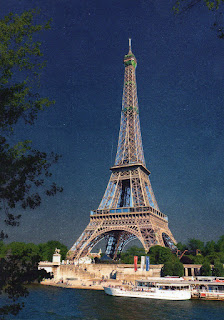This site covers a large portion of the ancient Silk Road and include some previously designed UNESCO sites
 |
| Dulan |
This postcard was sent by Jianlun
This property is a 5,000 km section of the extensive Silk Roads network, stretching from Chang’an/Luoyang, the central capital of China in the Han and Tang dynasties, to the Zhetysu region of Central Asia. It took shape between the 2nd century BC and 1st century AD and remained in use until the 16th century, linking multiple civilizations and facilitating far-reaching exchanges of activities in trade, religious beliefs, scientific knowledge, technological innovation, cultural practices and the arts. The thirty-three components included in the routes network include capital cities and palace complexes of various empires and Khan kingdoms, trading settlements, Buddhist cave temples, ancient paths, posthouses, passes, beacon towers, sections of The Great Wall, fortifications, tombs and religious buildings. - in: http://whc.unesco.org/en/list/1442
 |
| Daming Palace |
This postcard was sent by Wei Tianyi
The Daming Palace was the imperial palace complex of the Tang Dynasty, located in its capital Chang'an. It served as the royal residence of the Tang emperors for more than 220 years. - in: wikipedia
 |
| Longmen Caves |
This postcard was sent by Lydia
The Longmen Grottoes or Longmen Caves are some of the finest examples of Chinese Buddhist art. Housing tens of thousands of statues of Buddha and his disciples, they are located 12 kilometres (7.5 mi) south of present-day Luoyang in Henan province, China. - in: wikipedia
 |
| Yumen Pass |
This postcard was sent by Marco
Yumen Pass, or Jade Gate or Pass of the Jade Gate, is the name of a pass of the Great Wall located west of Dunhuang in today's Gansu Province of China. During the Han dynasty (202 BC - 220 AD), this was a pass through which the Silk Road passed, and was the one road connecting Central Asiaand China, the former called the Western Regions. Just to the south was the Yangguan pass, which was also an important point on the Silk Road. - in: wikipedia
 |
| Mogao Caves |
This postcard was sent by Ashley
The Mogao Caves, also known as the Thousand Buddha Grottoes or Caves of the Thousand Buddhas, form a system of 492 temples 25 km (16 mi) southeast of the center of Dunhuang, an oasis strategically located at a religious and cultural crossroads on the Silk Road, in Gansu province, China. - in: wikipedia
 |
| Burana Tower |
This postcard was sent by Marco
The Burana Tower is a large minaret in the Chuy Valley in northern Kyrgyzstan. It is located about 80 km east of the country's capital Bishkek, near the town of Tokmok. The tower, along with grave markers, some earthworks and the remnants of a castle and three mausoleums, is all that remains of the ancient city of Balasagun, which was established by the Karakhanids at the end of the 9th century. An external staircase and steep, winding stairway inside the tower enables visitors to climb to the top.
The tower was originally 45 m (148 ft) high. However, over the centuries a number of earthquakes caused significant damage to the structure. The last major earthquake in the 15th century destroyed the top half of the tower, reducing it to its current height of 25 m (82 ft). In the early 1900s, Russian immigrants to the area used some of the bricks from the tower for new building projects. A renovation project was carried out in the 1970s to restore its foundation and repair the west-facing side of the tower, which was in danger of collapse. - in: wikipedia
I'm still missing a postcard from Kazakhstan



































